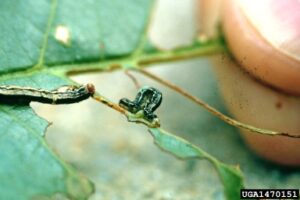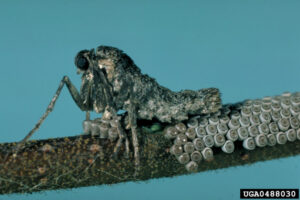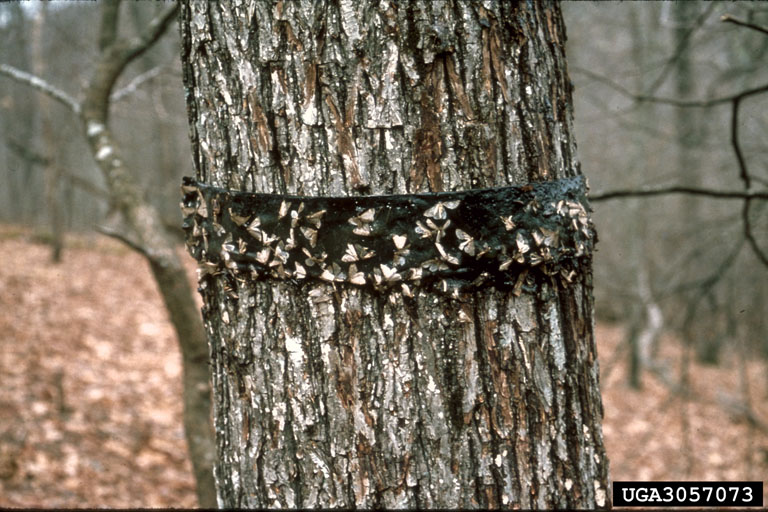’tis the Season to Hang Sticky Bands to Prevent Cankerworm
go.ncsu.edu/readext?829770
en Español / em Português
El inglés es el idioma de control de esta página. En la medida en que haya algún conflicto entre la traducción al inglés y la traducción, el inglés prevalece.
Al hacer clic en el enlace de traducción se activa un servicio de traducción gratuito para convertir la página al español. Al igual que con cualquier traducción por Internet, la conversión no es sensible al contexto y puede que no traduzca el texto en su significado original. NC State Extension no garantiza la exactitud del texto traducido. Por favor, tenga en cuenta que algunas aplicaciones y/o servicios pueden no funcionar como se espera cuando se traducen.
Português
Inglês é o idioma de controle desta página. Na medida que haja algum conflito entre o texto original em Inglês e a tradução, o Inglês prevalece.
Ao clicar no link de tradução, um serviço gratuito de tradução será ativado para converter a página para o Português. Como em qualquer tradução pela internet, a conversão não é sensivel ao contexto e pode não ocorrer a tradução para o significado orginal. O serviço de Extensão da Carolina do Norte (NC State Extension) não garante a exatidão do texto traduzido. Por favor, observe que algumas funções ou serviços podem não funcionar como esperado após a tradução.
English
English is the controlling language of this page. To the extent there is any conflict between the English text and the translation, English controls.
Clicking on the translation link activates a free translation service to convert the page to Spanish. As with any Internet translation, the conversion is not context-sensitive and may not translate the text to its original meaning. NC State Extension does not guarantee the accuracy of the translated text. Please note that some applications and/or services may not function as expected when translated.
Collapse ▲It’s hard not to love this time of year between the spectacle of fall colors and the reprieve of cooling temperatures. And although trees are losing leaves, now is an important time to take precautionary measures if cankerworms are your tree’s #1 enemy each spring.

Cankerworms are defoliating caterpillars in the inchworm family (Geometridae), recognized by the movement of crawling through a series of arching their back then stretching straight. Image: A. Steven Munson, USDA Forest Service, Bugwood.org
What are cankerworms? Cankerworms are small caterpillars that eat tree leaves. They feed on numerous hardwood trees, including (but not limited to): red and white oak, maple, ash, basswood, beech, black cherry, apple, elm, and hickory. In urban areas, they can be quite abundant, contributing to tree stress and mortality. They’re also considered a nuisance, hanging from silken threads and dropping onto people and cars and raining down loads of frass (=bug excrement). They can also strip entire trees of their leaves, leading to an aesthetically displeasing bare tree in the spring, when the world around it is going green. Between the stress they cause to trees, the annoyance factor, and aesthetic concerns, many choose to band their trees for cankerworm management.

Whether wingless like fall cankerworm (shown) or winged like spring cankerworm, the female of neither species can fly. To reach the treetop to mate and lay eggs, she must crawl up the trunk. The sticky bands capture her during this climb. Image: John Ghent, Bugwood.org.
How do cankerworm bands work? When adult female moths emerge from the soil, they crawl up the trunk of the tree to reach the top. There, they emit pheromones to attract a male, mate, and lay eggs. However, when sticky bands are wrapped around the tree trunk, female moths get caught in this sticky substance as they ascend, never making it to the tree top and therefore never laying eggs.
When should I band my tree? Wait until most of the leaves have dropped. In much of NC, this typically occurs in mid to late November. If you hang the band before leaf drop, leaves may stick to the band, creating a “bridge” the moth can crawl across.
When should bands be removed? There are two species of cankerworm: the fall and spring cankerworm. These are named for the time of year the adults emerge; however, caterpillars of both species feed in the early spring. By banding trees in the fall, they control the adult emergence of the fall cankerworm. Bands should be kept up through the spring (early May) to control the spring cankerworm emergence.
Do I really need to band my tree? If your trees are defoliated by cankerworms in the spring and you want to prevent this from happening next spring, then yes! In NC, most severe cankerworm infestations occur in urban areas.
Another consideration is proximity to other trees. If the top of one tree touches another, cankerworms can climb up one tree and cross over to the other. Neighbors should encourage one another to band trees that are touching. Sometimes, neighbors even go in on supply costs!
How do I band a tree for cankerworm? No need to turn to Pinterest! We got your step by step tutorial right here, available as a video or text below:
Materials needed: 1) fiberglass pipe insulation (3″ wide, no foil backing), 2) 80 gauge stretch wrap, 3) Tanglefoot insect barrier, 4) utility knife, 5) putty knife, 6) staple gun & staples, 7) disposable gloves.
Steps:
- Insulation installation: Wrap insulation around the trunk of the tree and secure it with the staple gun. (Try not to use too many staples and don’t use nails or a nail gun!) If you’re banding a tree with furrowed bark, it might be necessary to pack additional insulation into the valleys of the bark to eliminate any gaps between the insulation and the bark of the tree. (This will prevent a moth from crawling under the band!)
- Wrap: Wrap the stretch wrap around the tree, on top of the insulation. Pull the material to ensure it’s tight against the insulation. Overlapping and stretching the plastic will allow it to cling to itself. Cut the stretch wrap with the utility knife. (Note: You can do these first 2 steps in advance, and return to apply the Tanglefoot when appropriate.)
- Apply Tanglefoot: While wearing gloves, use the putty knife to apply a ~1/8″ thick layer of Tanglefoot on the band. The band should be about 6-7″ wide consistently around the tree trunk. (Try to handle Tanglefoot carefully as it is VERY sticky! Paint thinner can be used to help clean up the tree band and baby oil or citrus cleaners can be used on your hands.)
- Observe: Now is the easy part! Check your band every few weeks to ensure no “bridges” are made to allow moths to cross the band. Sometimes falling leaves or even an abundance of moths will accumulate and create non-sticky “bridges”, allowing moths to pass on by. If you see debris or insect build up, simply apply another layer of Tanglefoot.
- Remove: In order to capture the ascending populations of both the fall and spring cankerworms, leave bands up through spring when cankerworm activity has gone. (Usually, bands can come down in the beginning of May.) Use a utility knife to cut a slit in the band and remove.
- Enjoy! Admire the green leaves on your tree!
So, as holiday gatherings approach, dress your trees for the occasion as well. They’ll thank you next spring!

Sticky bands capture female moths as they crawl up the tree trunk. Image: William A. Carothers, USDA Forest Service, Bugwood.org.


